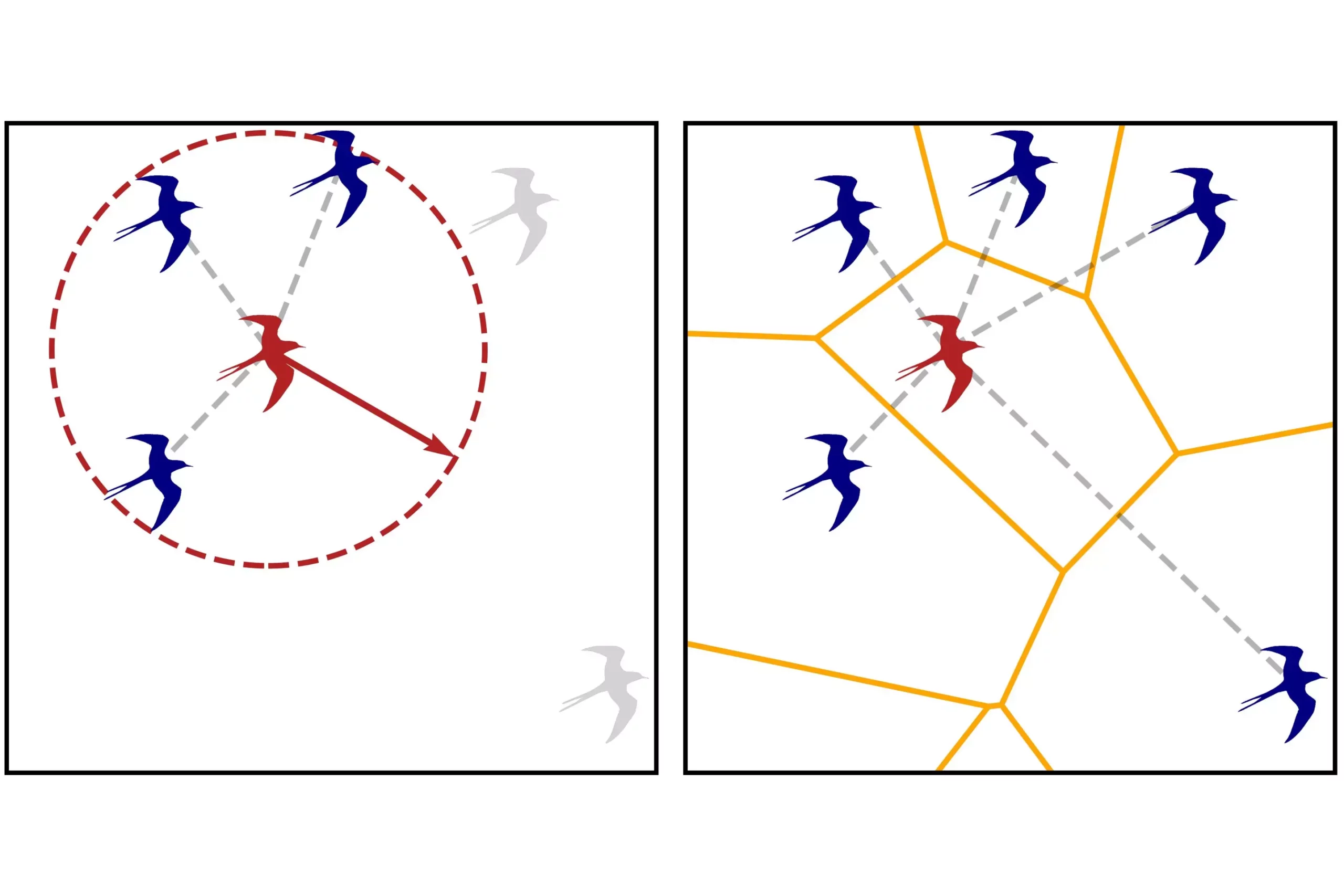The fields of physics and biology often seem worlds apart, yet they intersect in fascinating ways when it comes to the concept of collective movement. Recent research underscores the idea that elements as disparate as atoms in a material and flocks of birds share profound similarities in how they exhibit coordinated movements. An international study led by a multi-institutional team, including contributors from MIT and CNRS in France, has shed light on these commonalities. The findings, published in the Journal of Statistical Mechanics: Theory and Experiment, indicate that our understanding of collective behavior can benefit significantly from principles that govern physical systems.
Many believe there is a deep, intrinsic difference between ‘self-propelled agents’ found in nature—like birds and crowds—and the particles that constitute materials. Traditional understanding has framed the transition from chaotic movement to organized flow as a distinctly different process in biological systems than in physical particles. For instance, in physics, particles’ interactions are often dictated by their physical proximity to one another. However, the current research posits that these differences may not be as significant as previously thought.
Julien Tailleur, a researcher at MIT, noted that “in a way, birds are flying atoms.” This provocative metaphor captures the essence of the study’s main finding: that the mechanics behind how entities like human crowds and avian flocks operate share underlying principles with particle physics. It suggests that predictions about collective movements can utilize a unified conceptual framework, navigating beyond traditional boundaries of science.
A pivotal aspect of the research is the concept of distance in collective movement. In the realm of physics, the interactions among particles are largely based on their physical distances from one another. In contrast, biological agents like birds engage with their surroundings more through the concept of visibility rather than mere proximity. Tailleur illustrated this distinction through the example of a pigeon in flight. The bird isn’t solely influenced by those closest to it; rather, the pigeon’s awareness is restricted to its visual field. This leads to what researchers term a “topological relationship,” a kind of network of influence among visible, rather than physically near, agents.
The implications of this insight are vast, suggesting that cognitive limitations shape how living organisms coordinate their movements, much like the interactions among particles relies upon their physical constraints. While recognizing this topological influence seems to offer a nuanced understanding of collective behavior, one must also appreciate the interactive complexities that future models will have to incorporate.
Discontinuous Phase Transitions: A New Perspective
A significant revelation emerging from the research was the nature of phase transitions within these systems. Previously, physicists operated under the assumption that transitions toward order in biology-inspired models would follow a continuous path. However, the investigation by Tailleur and his colleagues unveiled a different paradigm—these systems might display a discontinuous phase transition. This means that large groups can suddenly coordinate their movements, akin to flocks of birds aligning in the sky.
This finding mirrors phenomena observed in ferromagnetic materials, which transition from disorder to order based on interactions among their constituent particles. At high temperatures, the spins of these particles point randomly, yielding a disordered state. Yet, as conditions shift toward lower temperatures, their interactions become more significant, fostering a collective alignment. Applying this analog to biological systems not only expands the scope of understanding in both physics and biology but also challenges existing frameworks surrounding collective behavior.
The convergence of physics and biology through the lens of collective movement spurs exciting possibilities for future research and applications. Although Tailleur acknowledges that the model possesses simplifications, he emphasizes the necessity for stripping down complexity to grasp the phenomena more effectively. By exploring commonalities in collective motion across various entities using statistical models derived from physical principles, we can pave the way for innovative methodologies in understanding group dynamics in nature.
This dual-dialogue between physics and biology demonstrates the importance of interdisciplinary collaboration, fostering a deeper appreciation for how fundamental principles can illuminate the patterns present in our world—from the microscopic to the macroscopic. As researchers explore these intersections further, the potential to unveil novel insights into the mechanics of collective behavior remains promising and spirit-lifting.
In essence, what took root in a collaboration between biophysics and statistical mechanics not only enhances our comprehension of collective motion but also bridges gaps between the disparate realms of scientific inquiry. As we continue to explore these relationships, the quest for understanding collective behavior in both biological and physical systems may increasingly reflect a unified approach, transcending traditional boundaries and expanding our grasp of the natural laws that govern the universe.


Leave a Reply